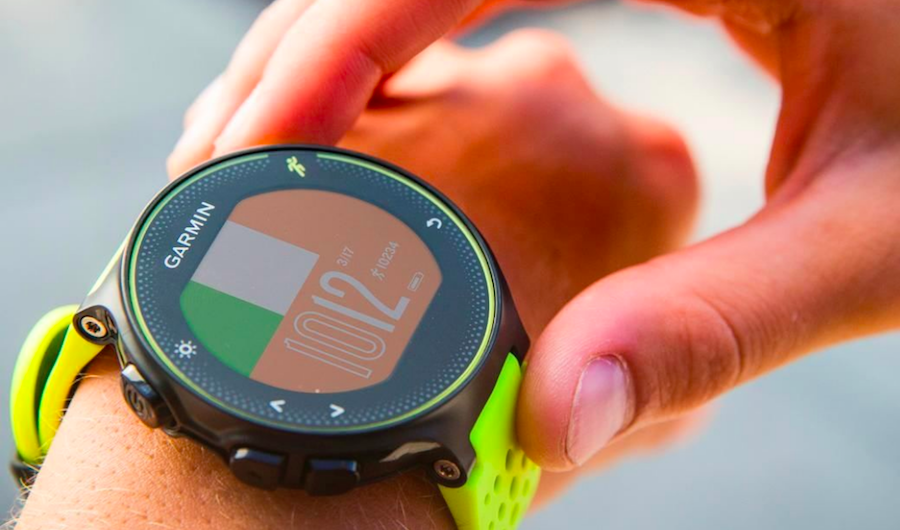Powered by robust gains in its Outdoor, Fitness and Aviation segments, Garmin Inc. reported sales climbed 10.8 percent in the first quarter.
Revenues grew 10.8 percent to $711 million, handily above Wall Street’s consensus estimate of $668.8 million.
Outdoor segment revenues grew 24.5 percent to $144.3 million with significant contributions from the Fēnix adventure line of wearables. Gross margin improved to 65 percent while operating margin remained strong at 30 percent, resulting in operating income growth of 27 percent.
On a conference call with analysts, Cliff Pemble, president and CEO, said that during the quarter, Garmin began shipping the Descent dive watch. He added, “Descent brings innovation to the dive computer market by combining smartwatch utility with dive computer functions for the underwater adventure. Descent has been well received and we are excited for the opportunities we have in this new product category.”
“Also, we recently announced the Tactix Charlie, a tactical themed smartwatch, with unique features such as night vision compatibility and Jumpmaster mode for skydivers.”
Pemble said the Fēnix 5 wasn’t introduced until late in the first quarter of 2017 and the overall Outdoor segment will face a “much more difficult comparison” over the remainder of the year.
Fitness segment revenues grew 20.5 percent to $166.0 million, driven by advanced wearables. Gross and operating margins increased year-over-year to 58 percent and 20 percent, respectively, resulting in an operating income growth of 81 percent.
Pemble said during the quarter the Fitness segment began shipping the Forerunner 645M, Garmin’s first GPS running watch with integrated music and mobile payments. Garmin also recently announced several new cycling products including the Edge 130 and the Edge 520 Plus. The Edge 130 is an entry level cycling computer packed with features and the Edge 520 Plus offers advanced mapping and navigation capabilities. The Varia RTL510, the latest in Garmin’s series of products that focus on cycling safety, was also introduced.
Garmin’s Fitness segment also hosted its second annual Connect IQ Developer Summit bringing together application developers and business partners to participate in hands-on workshop with Garmin product managers and engineers. Said Pemble, “The momentum behind Connect IQ is accelerating with more than 54 million Connect IQ downloads to more than 8 million compatible devices shipped since inception.”
He added, “And finally just yesterday, we announced the collaboration with the University of Kansas Medical Center on multiple research projects exploring the use of wearable technology for the early detection of under reported health conditions such as sleep apnea and atrial fibrillation.”
Garmin noted that even though the market for basic activity trackers has continued to rapidly mature, the company continues to see opportunities for advanced wearables within the fitness segment.
Regarding basic trackers, Pemble said, “There is pockets of strengths geographically and also by product lines that we have, but generally we see a downward trend.”
He also said in answer to an analyst’s question that Garmin continues to guide Fitness to show declines in aggregate for the remainder of the year due to the ongoing decline of basic activity trackers and significant sell-in of new products in Q4 of 2017.
In the Marine segment, revenues grew 8.7 percent to $113.6 million, driven by the Navionics acquisition. Gross margin increased year-over-year to 59 percent, while operating margin declined to 12 percent. During the first quarter of 2018, Garmin introduced the GCV 20 ultra-high definition scanning sonar that delivers higher 3 resolution imaging at greater depths. Additionally, Garmin was selected as the exclusive marine electronics supplier to the Independent Boat Builders, Inc., the industry’s largest purchasing cooperative network of leading boat brands. Garmin said it remains focused on innovations and achieving market share gains within the inland fishing category.
Among its other two segments, Aviation sales grew 18.6 percent to $145.7 million. Auto segment sales were down 11.9 percent to $141.3 million.
Operating earnings rose 21.5 percent to $142.2 million. Net earnings declined 45.7 percent to $129.4 million, or 69 cents share, due to a huge tax benefit in the year-ago quarter. Net income before taxes rose 74.2 percent to $154 million. Earnings easily exceeded Wall Street’s consensus estimate of 56 cents.
Gross margin improved to 60.0 percent compared to 58.1 precent in the prior year quarter due to segment and product mix. Operating expense as a percentage of sales was 40 percent, consistent with the prior year.
Looking ahead, Garmin said it was maintaining its 2018 guidance for revenue of approximately $3.2 billion and pro forma EPS of $3.05.
Garmin officials also said there’s been no change to growth expectations among its segments.
Among the projections for 2018:
- Revenue in the Outdoor segment is projected to increase approximately 13 percent;
- Revenue in the Fitness segment is expected to be flat in 2018 as growth in advance variables, cycling and children’s trackers is offset by further declines in basic activity trackers;
- Revenue in the Marine segment is expected to increase 18 percent, consisting of both organic growth, as well as growth from the recent Navionics acquisition;
- Revenues in the Auto segment is expected to decline 17 percent;
- Aviation sales are projected to climb approximately 13 percent.
Photo courtesy Garmin
















